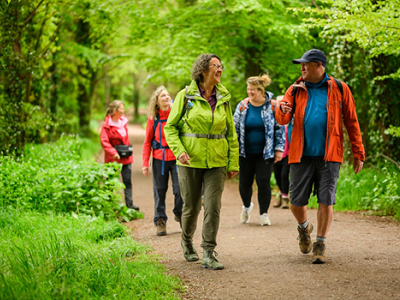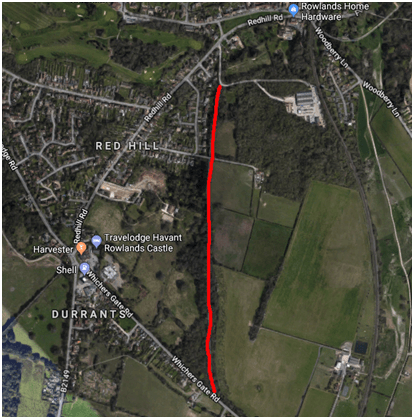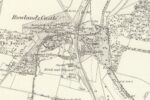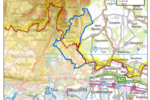Walks and Maps
Walking
The benefits of regular exercise such as walking are well known. NHS Walking for Health says:
Walking is simple, free and one of the easiest ways to get more active, lose weight and become healthier. Sometimes overlooked as a form of exercise, walking briskly can help you build stamina, burn excess calories and make your heart healthier.
You do not have to walk for hours. A brisk 10-minute daily walk has lots of health benefits and counts towards your 150 minutes of weekly exercise, as recommended in the physical activity guidelines for adults aged 19 to 64.
We have collated here links to other websites or to walks which are based in and around Rowlands Castle. If you would like to combine walking with learning more about the village and surrounding areas, please try one of our History and Heritage Trails.
Cycling
The countryside charity, CPRE, say that cycling is one of the most enjoyable and efficient ways for people to get around. It’s good for the environment and it’s good for people’s health
Cycling is great for our bodies. The NHS recommends it as a great way to get fit and stay healthy, with regular cycling is known to reduce the risk of chronic illnesses including heart disease and stroke.
It’s also a brilliant way to get around the countryside, and to enjoy the amazing scenery on our doorsteps. The link above takes you to some cycling routes provided by David Mitchell, a Rowlands Castle resident.
Maps
Rowlands Castle is located on the boundary between East Hampshire and West Sussex and is surrounded by beautiful countryside, easily accessed from the village. Many people start their walks here, returning to enjoy a meal in our lovely pubs and café. The growth of the village can be charted over time through maps available on the National Library of Scotland website and a selection is shown below.
Walks (Rambles) in East Hampshire

Fresh air and friendly faces is the formula behind a host of organised walks around East Hampshire and Havant. Wellbeing Walks, co-ordinated by East Hampshire District Council and managed by volunteer walk leaders, gives local residents the opportunity to enjoy a regular, easy-going stroll through the district’s picturesque countryside.
Previously called Walking for Health, the scheme which is run nationally by the Ramblers, has been renamed Wellbeing Walks. A new website has been launched to help people sign up for the walk that suits them. Visit the Havant Wellbeing Walks website
There are 22 walks across East Hampshire and Havant, with a mixture of weekly and monthly walks, and each one is free to attend. All abilities are welcome as there is a walk to suit everyone ranging from 30 minutes to 90 minutes.
If you are interested in becoming a walk leader please let your local walk leader know, or phone or email the Wellbeing Walks Coordinator on 07341 462825 or email: healthwalks@easthants.gov.uk
Bridleway 24, Brickworks to Whichers Gate Road

This path dates back from the 10th century as does the Magan (bank and ditch) to its right hand side which was the boundary of the Saxon parish of Warblington. This was 100 years before the Norman conquest of 1066. For the next 600 years it was a main route into Rowlands Castle which was at that time just a meeting point of similar ‘highways’. Their main purpose would have been for the movement of cattle to pasture. It was a Drift or Drove road.

By the 17th century the movement of cattle was more controlled and at the Whichers Gate road entrance to the bridleway is the site of Whichers Gate, which was exactly that – a gate where a toll was payable for access to Emsworth Common for the grazing of such cattle.

Up to the end of the 18th century there was a twice yearly market at Rowlands Castle, by then a sizable village. Why this route remained a path and not a road as we know it may be due to other roads becoming more popular with housing along them.

Today it serves as a bridleway and is a beautiful, scenic alternative route for access into Rowlands Castle from Whichers Gate Road. Look out for the boundary stone marked 1871.

Information supplied by Hants and WS Borders Bridleways Group and Veolia Environmental Trust in conjunction with Hampshire County Council.










